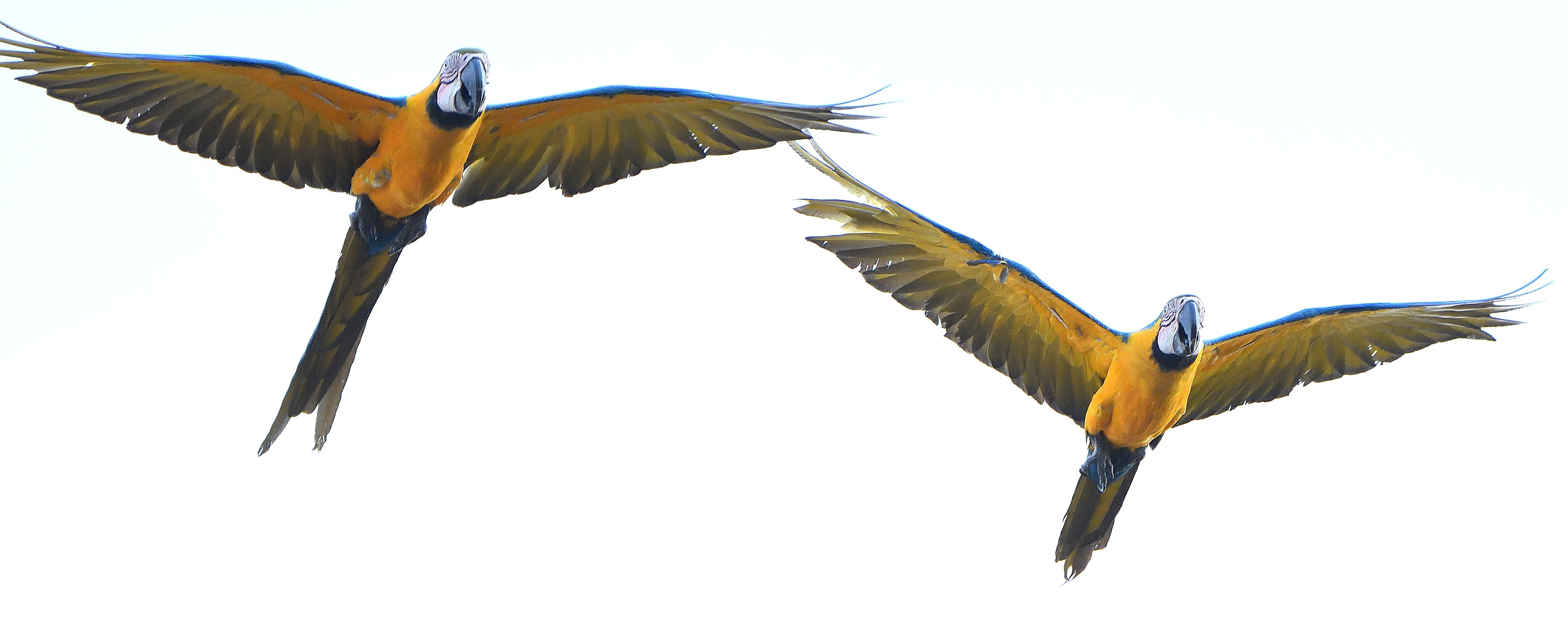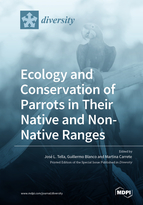Ecology and Conservation of Parrots in Their Native and Non-Native Ranges
A special issue of Diversity (ISSN 1424-2818). This special issue belongs to the section "Biodiversity Loss & Dynamics".
Deadline for manuscript submissions: closed (31 March 2021) | Viewed by 114731
Special Issue Editors
Interests: biological invasions; conservation biology; ecology and conservation of parrots; Neotropical birds; seed dispersal; threatened species; urban birds; wildlife trade
Interests: conservation biology; ecology; birds; ecotoxicology; pathogens; evolution; raptors; parrots; corvids; behavioral ecology; population dynamics; population trends; pharmaceuticals; conservation management; wildlife
Special Issues, Collections and Topics in MDPI journals
Special Issue Information
Dear Colleagues,
We are pleased to announce a forthcoming Special Issue of Diversity focused on parrots, which are among the most fascinating, attractive and threatened birds in the world.

With about 400 species widely distributed across continents and oceanic islands, parrots (Psittaciformes) stand out among birds by their poor conservation status. According to the 2019 IUCN Red List, 26 % of parrot species are threatened with extinction and 14 % are listed as near threatened. Moreover, 58 % of all the species are experiencing global population declines. Although threats such as habitat loss and wildlife trade are widely recognized for parrots, detailed studies on the biology, ecology, population dynamics, population genetics and site-specific conservation threats are lacking for most of them. The need for further research is exemplified by the splits and descriptions of new parrot species and by the ecological functions of parrots, such as seed dispersal, that have been overlooked until recent years. Given the ecosystem services they may provide, the conservation of parrot populations may contribute to the health of the habitats where they live.
Concernedly, their attractiveness has made them subject of intensive transport to foreign pet markets across the world. International trade has caused that at least 60 parrot species had established populations out of their native ranges, often resulting in flourishing populations that contrast with the poor conservation status of many native populations. However, studies on non-native populations have been mostly restricted to two parakeet species. Much more research is needed on these non-native parrot populations, including aspects such as their establishment and spread processes, population dynamics, potential impacts (positive and negative) on their recipient habitats and communities, the need or not for control and/or eradication, or their ecological functions in their invaded regions.
This Special Issue is an exciting opportunity to combine and synthesise recent research on both native and non-native parrot populations. Diversity’s team and we kindly invite you to submit a manuscript focused on any of the above topics. Although specific case studies with broad implications are welcome, we encourage authors to submit large-scale and/or multi-specific studies, synthesis works and reviews that could better enlarge our knowledge on the ecology and conservation of native and invasive parrots. If you are interested in this opportunity or have any question, please do not hesitate to contact us.
Prof. Dr. José L. Tella
Dr. Guillermo Blanco
Dr. Martina Carrete
Guest Editors
Manuscript Submission Information
Manuscripts should be submitted online at www.mdpi.com by registering and logging in to this website. Once you are registered, click here to go to the submission form. Manuscripts can be submitted until the deadline. All submissions that pass pre-check are peer-reviewed. Accepted papers will be published continuously in the journal (as soon as accepted) and will be listed together on the special issue website. Research articles, review articles as well as short communications are invited. For planned papers, a title and short abstract (about 100 words) can be sent to the Editorial Office for announcement on this website.
Submitted manuscripts should not have been published previously, nor be under consideration for publication elsewhere (except conference proceedings papers). All manuscripts are thoroughly refereed through a single-blind peer-review process. A guide for authors and other relevant information for submission of manuscripts is available on the Instructions for Authors page. Diversity is an international peer-reviewed open access monthly journal published by MDPI.
Please visit the Instructions for Authors page before submitting a manuscript. The Article Processing Charge (APC) for publication in this open access journal is 2600 CHF (Swiss Francs). Submitted papers should be well formatted and use good English. Authors may use MDPI's English editing service prior to publication or during author revisions.
Keywords
- Conservation threats
- Conservation management
- Population dynamics
- Population genetics
- Habitat suitability
- Ecological functions
- Invasion processes
- Population ecology of non-native parrots
- Positive and negative impacts of non-native parrots
- Ecological functions of non-native parrots








